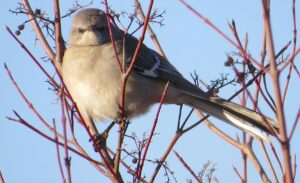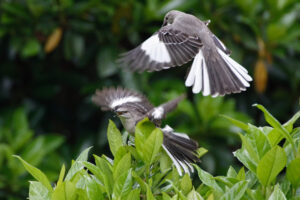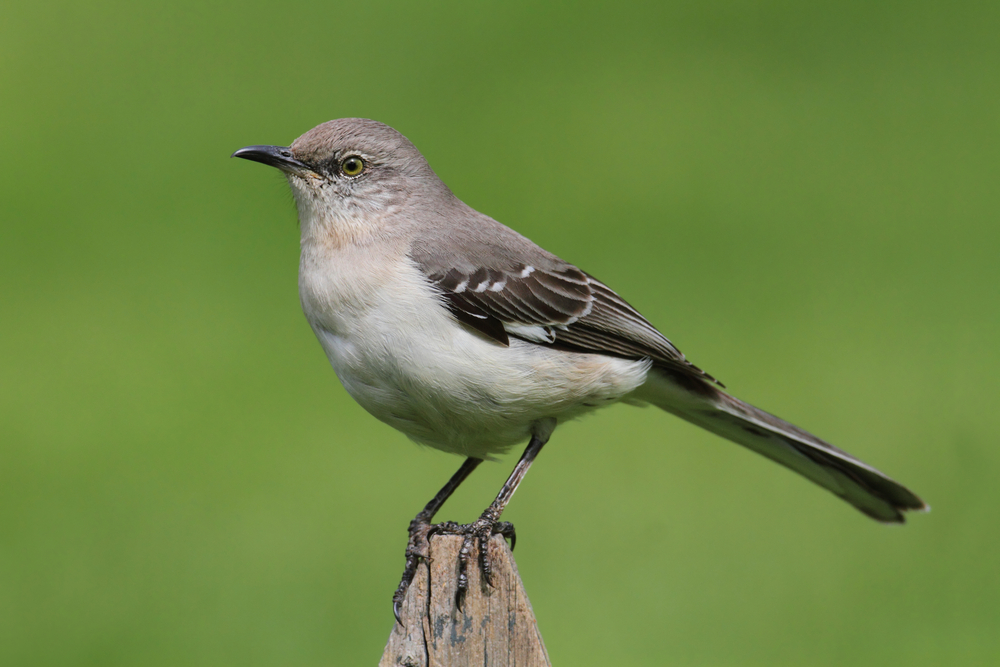Northern Mockingbird, Mimus polyglottos
Bill Rowe
The New World family Mimidae—called the “mimids” and including thrashers, catbirds, and mockingbirds—does indeed contain some species that are remarkable for their mimicry, none more famous or versatile than our familiar Northern Mockingbird, which makes itself at home in our neighborhoods as well as the countryside. Mockingbirds can imitate other birds’ songs and calls to perfection, as well as non-bird noises like whistles and creaking machinery; it incorporates these into its song, which is a long chain of varied phrases, each one usually repeated several times before the bird switches to another phrase. Studies of mockingbird song have suggested that an individual may keep adding phrases to its repertoire throughout its lifetime, with a few birds accumulating as many as 200 phrases. It will have a long period of regular singing in the spring (including nighttime singing, especially for unmated males) and another singing period in the fall, using phrases different from those of spring, plus some song occasionally popping out at random in the winter. Here in the Midwest, we have one each of the basic mimid groups—one catbird, one thrasher, and one mockingbird—and given that the only other mockingbirds ever seen in the U.S. are a couple of accidental vagrants to south Florida and the Mexican border states, there is really no reason why we need to add “Northern” every time we want to talk about our own mockingbirds; the name simply reflects international diversity. The scientific name, by the way, is a mix of Latin (mimus = a mime or mimic) and Greek (polyglottos = a polyglot, one who speaks many languages).
IDENTIFICATION: Not much like any other common bird: long tail with white outer feathers, slender bill slightly decurved, gray above, off-white below, and two wingbars plus a white wing-patch that shows well in flight. The only vaguely similar, same-size birds are the rare Northern and Loggerhead Shrikes, both of which have an obvious black mask through the eyes, and the Gray Catbird, which is solid gray with a black cap and rusty undertail. Identifying a mockingbird by song should be easy as long as you eliminate a Brown Thrasher, whose phrases are somewhat similar but are repeated only two or three times. The mockingbird’s distinctive year-round call-note is a loud chack.
ST. LOUIS STATUS: A fairly common nesting resident of semi-open country and suburbs; somewhat less common in winter, when some mockingbirds retreat southward. Fond of perching on poles and power lines, as well as rooftops; visits feeders at times.
Learn more and listen to the songs and call notes of mockingbirds here.


Curiosity or attitude?
Photo Credit: Bill Rowe
Mockingbirds displaying




